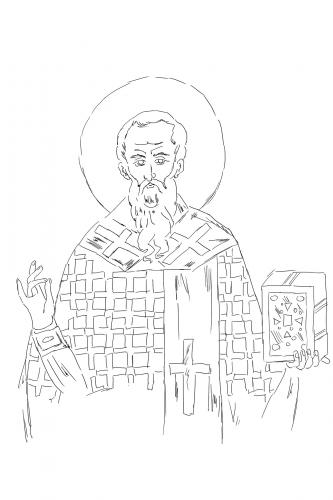



Saint Gregory the Great (the Dialogist)
Pope Gregory I (590-604) is commonly known as St. Gregory the Great, but also as St. Gregory the Dialogist, due to his work “Dialogues”, a four volumes collection of 6th. century Italian hagiographic legends, where the 2nd. volume is entirely dedicated to the life of St. Benedict.
Pope Gregory played a crucial part in the liturgical reform of both the Western and the Eastern Churches, in the evangelisation of Britannia and in imposing the ecclesiastical musical style which bears his name – the Gregorian chant.
Iconographically, in the Byzantine and Post-Byzantine art, St. Gregory the Great is depicted, in most of the cases, frontally, either full-length or half-length, clad in bishop liturgical vestments, but without wearing a mitre. He is represented as an elderly man, his short thinned hair and beard completely white. His baldness marks his age as well as the catholic tonsure. His face is stern but emaciated, the gestures are hieratic. He is holding a Gospel in his left hand, while blessing with his right.
Pope Gregory I (590-604) is commonly known as St. Gregory the Great, but also as St. Gregory the Dialogist, due to his work “Dialogues”, a four volumes collection of 6th. century Italian hagiographic legends, where the 2nd. volume is entirely dedicated to the life of St. Benedict.
Pope Gregory played a crucial part in the liturgical reform of both the Western and the Eastern Churches, in the evangelisation of Britannia and in imposing the ecclesiastical musical style which bears his name – the Gregorian chant.
Iconographically, in the Byzantine and Post-Byzantine art, St. Gregory the Great is depicted, in most of the cases, frontally, either full-length or half-length, clad in bishop liturgical vestments, but without wearing a mitre. He is represented as an elderly man, his short thinned hair and beard completely white. His baldness marks his age as well as the catholic tonsure. His face is stern but emaciated, the gestures are hieratic. He is holding a Gospel in his left hand, while blessing with his right.




